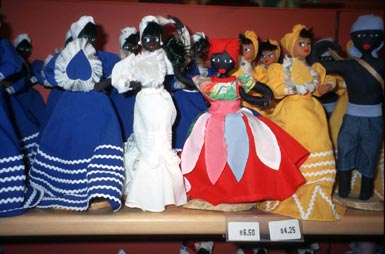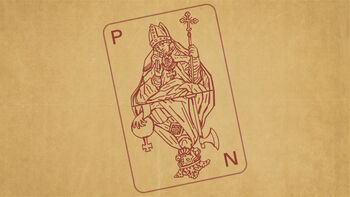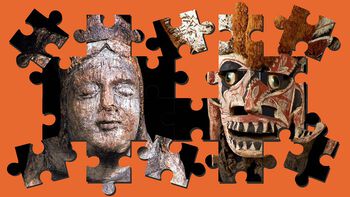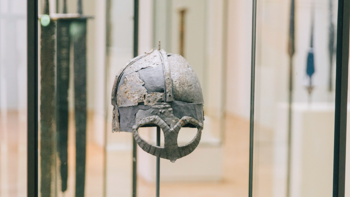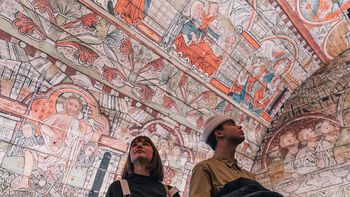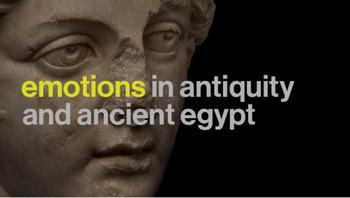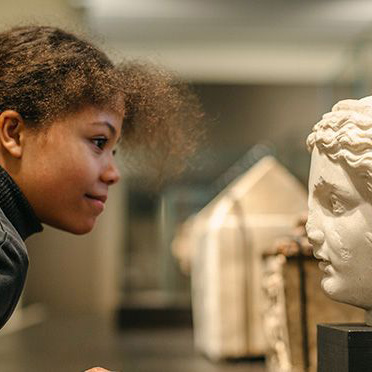
When the enslaved people came to Cuba
Exactly how many people were transferred against their will from Africa to the Caribbean after Columbus arrived in Cuba in 1492 is uncertain, but millions are mentioned. The settlers needed new manpower, as the original population of Cuba, consisting of Taino and Ciboney Indians, died out after the Spanish settled in the country.
The majority of the people who were bought, shipped and sold to settlers in Cuba came from areas in western Africa. Many belonged to an ethnic group called Yoruba. The slaves represented all strata of the social, economic, political and religious hierarchies in the areas they came from. Other ethnic groups than Yoruba were also represented among the slaves. In Cuba a clear distinction was created between the slaves and the Spanish settlers, both in relation to social position and skin colour. Today, on the other hand, the Cuban population consists of a mixture of the descendants of slaves, the Spanish colonisers, and Spaniards and Chinese that later came to the island. Every nuance of skin colour can therefore be found in Cuba. Despite the obvious mixture of former slaves and Hispanics, social distinctions and racism based on skin colour are also found even today.
The encounter between the Africans and the Hispanics

The ships that sailed across the Atlantic with the enslaved "… did not only carry men, women and children, but also their gods, beliefs and traditional folklore" (Bastide 1971). Apart from knowledge and beliefs, the slaves were stripped of everything. The beliefs and the knowledge they brought with them had to be adapted to the new social and climatic surroundings in the Caribbean areas. How this adaptation to a new environment occurred has been explained in different ways, ranging from submission to opposition, from assimilation to integration. The Cuban culture is often considered to be the result of a "marriage" between the African and the Spanish cultures, or as the result of a more deliberate process in which aspects from different cultures best suited to the current situation were selected.
The enormous influx of people from different cultural traditions is not only characteristic of Cuba, but of the whole Caribbean region. All over the Caribbean we find results of what has been termed "marriage" or "creation", both in music, dance and religion.
A new religion is born
Rituals and myths which the enslaved brought across the sea from Africa were gradually syncretised into a new belief system that has been called Santería. "La Santería es cubanisada por completa" (Santería is totally Cubanised), said the santera (a woman initiated into the religion) Teresa when asked about the roots and history of this religion. This "Cubanisation" occurred in the encounter between the different ethnic groups from Africa and the Catholic faith of the Spaniards. The gods that had been worshipped individually in Africa were gathered into a pantheon in Cuba. Adjustment to Spanish culture can be rediscovered in a number of Catholic features in Santería. The African santos are, for example, compared to the Catholic saints.
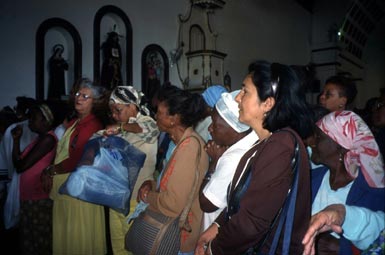
One of my informants, the santera Ana, explained the use of Catholic elements in Santería with the following story:
"The slaves were brought into the churches to be Christianised. The Spaniards hoped they would depart from their old beliefs. But things did not go quite as the slave-owners and clergy had envisioned. Instead of rejecting their own gods, the slaves continued worshipping them inside the church itself, disguised inside the Catholic cult of saints. The slaves found out that each of their African santos could be concealed behind a corresponding Catholic saint. Changó [the santo of lightning and thunder] could thus be concealed behind Saint Barbara, and Ochún [the santo of love] behind Caridad de Cobre. The slaves could thereby continue their own beliefs and cults within the walls and countenance of the church, but still concealed from the clergy."
In this way, the encounter between enslaved people and slave-owners left their marks. However, researchers and believers disagree on how important these marks are. The santera Ana kept producing new examples of the Catholic elements in Santería:
"In Santería, 13 people must never be seated at the table, the number seven is considered sacred and children are baptised in church."
The debate does not therefore centre on the presence of such elements in Santería, but on their significance. Some people consider Santería and Catholicism to be more or less the same, while others think that Santería should be purged of its Catholic influences. The santera Cristina represents one extreme, expressed for example in her statement "I am both a santera and a Catholic." To many, the relationship between the two religions is not only due to history, but also to an idea that there is only one God. "Everyone really believes in the same God, they have only given him different names in different countries. Díos, Olofi and Allah are in fact one and the same God!", said the santera Elesita. The obba (sacrificial priest) Rolando was, on the other hand, more critical to the combination: "I cannot understand why we should warmly welcome the Catholic elements when you think of all the cruelty with which the Catholics treated our ancestors." Some groups in Santería are in other words critical to the use of Catholic elements and want to "re-Africanise" the religion. Most believers, however, have pictures of Catholic saints on their altar and use some of the Catholic names when they talk about or to the santos.
There is a number of other religions in the Caribbean region that all bear the stamp of the encounter between the religions of the slaves and of the colonial power. I am then in particular thinking of candomblé in Brazil, voodoo on Haiti and the chango cult on Trinidad.
Cuba has several other religions with roots in Africa. The male cult abakuá is often mentioned, although it appears to be more of a secret brotherhood than religion. Palo monte, a religion with roots in Congo, is also relatively widespread in Cuba.
Santería and society
The cult of Santería did not only have to come to terms with the Catholic church, but also with Cuba's secular power.
Slavery was abolished in Cuba in 1886. However, the black part of the population did not escape suppression and humiliation and they had far fewer rights than the white population. According to María, an elderly black woman, blacks had to walk around the park in Santiago de Cuba, as it was reserved for whites only. Even President Batista, a mulatto, was made to feel this racism as he was refused admission to the more elegant, white country clubs in Havana.
Santería became associated with the black population, "las cosas de los negros" (things black people do) (Duharte and Santos 1999). Only a small number of white devotees existed or wished to come forward. The santera Virma explained how she, a young white woman during the period before the revolution, became an attraction as newly-initiated: "People came from far away and paid my madrina a lot of money to see la blanquita (the little white girl) who was initiated into the religion of the blacks."
The revolution
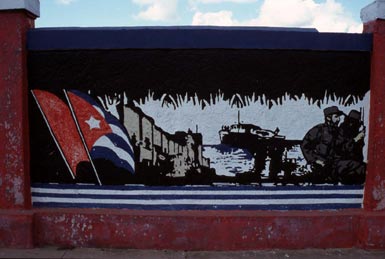
On 1 January 1959, the pro-American president Batista fled Havana soon after Castro's men captured the capital. In the spirit of the revolution there was talk of freedom, responsibility and equality. Both blacks and women were given rights they had not enjoyed before. Santería was still not quite acceptable in refined society, and both this religion and Catholicism were considered as threatening and incompatible with the ideas of the revolution. Both religions were banned: Santería because it was considered as primitive and incompatible with the revolutionary ideas of an educated people; Catholicism because its strong hierarchy and international contacts could directly threaten the Cuban government. People who openly showed they believed in Santería, by for example wearing a necklace showing which santo they belonged to, risked losing their jobs.
The santera Luisa referred to this period as "the time when your necklace always had to be kept deep down in your pocket when you went to school, so that rumours that you were a Santería devotee would not start to circulate". Most believers in Santería kept their beliefs to themselves because of such stories. Rituals, feasts and sacrifices were performed secretly. Santería, which had survived the attacks of the Spaniards because the believers concealed their worship behind Catholic images of saints, now survived behind closed doors.

Santería - a visible part of street life

It was only in the early 1990s that full religious freedom was introduced in Cuba. The reason is reportedly that Castro realised there was not necessarily any conflict between being revolutionary and religious. In addition, he no doubt realised that education and bans would not in any case chase either Catholic saints or African santos from the country. Today it is therefore possible to show that you practice Santería, even if you work at the university or in the public sector. Santería is today a visible part of the street scene. "I know people high up in the party, and in the very intelligence service itself, that are babalawos," said one babalawo (high priest) to the writers Bye and Hoel (1997). People also talk about both doctors and university professors who practice Santería. Although Santería is widespread, it is still not accepted in all walks of life and among all groups.
A common answer to the question of whether people consider Santería to be accepted in society was the following phrase from the Cuban group Alvares y Son: "Consultarse por la madrugada" (seek consultation at dawn). This refers to people consulting a religious expert while it is still dark so that nobody will see them. Thus, there are still people who do not accept Santería and therefore also people who conceal their faith. The santera Teresa belonged to the group of believers who had not told anyone, including her teachers and fellow students at the university, that she was an initiate. She explained it this way: "It is difficult enough to be black and be considered for a good job, if you should not also be associated with Santería."
Today Santería is far more accepted than only 10 years ago, even though there are still many sceptics and critics. However, it is difficult to say how many followers Santería has as no statistics are available. Cuba's annual statistical survey for 1999 says nothing about the number of believers or how widespread this religion is. One reason for this lack of statistics may be that the organisational structure of the cult makes it difficult to get a clear overview of the number of believers, but it is also due to the authorities' lack of interest in finding out and making the figures known.
Santería is today visible in the streets, it is present in popular music, and the tourist industry uses Santería in cabaret shows and tourist products. According to people in Havana, all music groups with any self-respect will have at least one song in their repertory about Santería or the santos. Examples may be the rap groups Orichas singing "Canto para Elegguá y para Changó" (I'm singing for Elegguá and I'm singing for Changó), NG La Banda praising "Papa Changó", and Van Van singing "Ay Dios ampárame!" (Oh God, embrace me) with a picture of a Santería necklace on the cover.
In parallel with the Cubans' growing interest in Santería, foreigners have also discovered this religion, and many go to Cuba to be initiated. Most of them come from other countries in Latin America and the U.S.A., but there are also santeros and babalawos in Europe.
